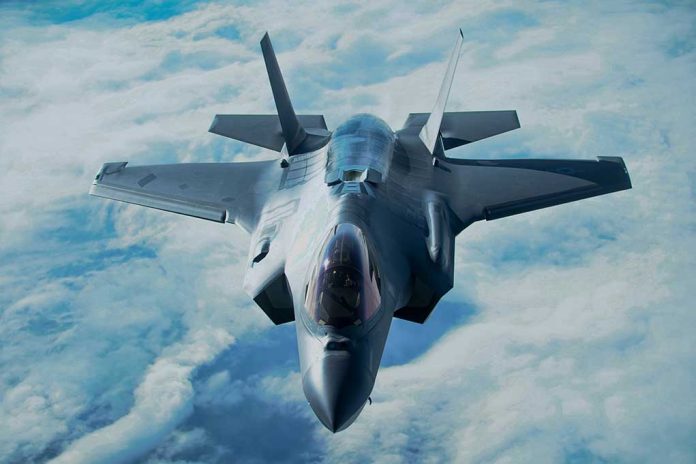
A Marine investigation has placed the blame on the pilot for the crash of an F-35 fighter jet in South Carolina in 2023.
At a Glance
- The pilot’s unnecessary ejection was a primary factor in the crash.
- The F-35 jet crashed unmanned, making detection difficult due to its stealth features.
- The aircraft’s malfunctioning systems contributed to the crash investigation findings.
- Despite the findings, the pilot did not face punitive measures.
Pilot Error Determined as Cause
The investigation into the crash of an F-35 in South Carolina concluded due to “pilot error,” specifically attributing the crash to the pilot ejecting prematurely. Reports indicated the pilot experienced disorientation during a system failure amid bad weather. The fighter jet continued flying for 11 minutes, ultimately crashing. The transponder malfunction, combined with the jet’s stealth technology, prolonged the location of the crash site by over a day.
The stealth technology, plus an “electrical event” affecting key systems, played key roles in the mishap. However, standby instruments and backup radios were operational, indicating alternative options for the pilot. The jet’s loss of contact was further compounded by its low-observable technology. Despite the crash, the pilot exited without significant repercussions.
JUST IN: Marine Corps investigators blamed the pilot for the high-profile crash of a F-35B stealth fighter jet last year near Charleston, S.C., in which the plane continued to fly more than 60 miles after the pilot ejected.https://t.co/Ex7QU66jCP
— Stars and Stripes (@starsandstripes) October 31, 2024
Investigative Findings and Repercussions
The crash report detailed several contributing factors to the incident. The jet faced system failures during a heavy rain landing attempt. The pilot, Col. Charles “Tre” Del Pizzo, cited spatial disorientation and disorientation over instrument reliability, leading to his ejection. Notably, the F-35B remained under computer control the entire period.
“With no visible reference to the horizon or ground, and unsure of which flight instruments he could trust, he perceived that the aircraft was still not responding to his commands to convert—and therefore was out-of-controlled flight,” the Marine Corps investigation said.
Despite the pilot error, no punitive actions followed. Reports highlighted system failures rather than negligence. Del Pizzo returned to active status post-performance review, but was relieved from his command position. Ejecting due to the crash was deemed as a lack of trust in his instruments, despite their reliability in the simulation exercises.
A Broader Context
This incident adds to a history of mishaps with the F-35 fighter jets. Highly scrutinized since its inception, various accidents have raised concerns about its cost and effectiveness. The crash sparked significant media attention, especially concerning the prolonged time it took to locate the advanced stealth aircraft.
The financial impact of the $100 million crash and the subsequent $2.1 million cleanup and examination costs highlight the complexities and immense resources devoted to addressing such incidents. This event underscores the increasing scrutiny on the F-35 series’ potential operational obstacles moving forward.
Sources
- Pilot error blamed for crash of military jet missing for more than a day in South Carolina
- Marine Corps Blames Pilot Error for Crash of Malfunctioning F-35 in South Carolina Forest
- Pilot Error Blamed for Crash of Military Jet Missing for More Than a Day in South Carolina





